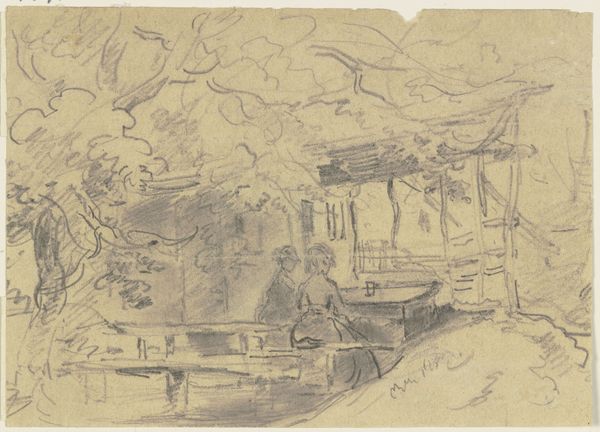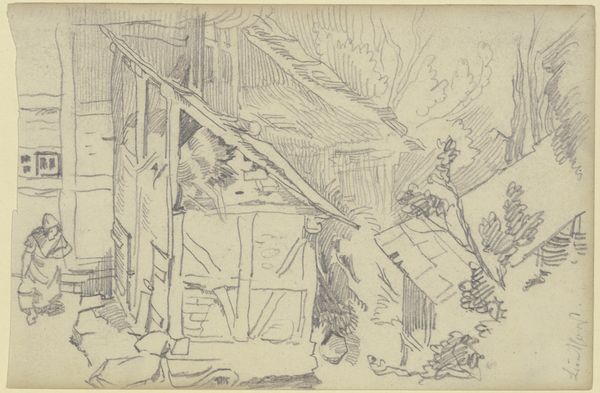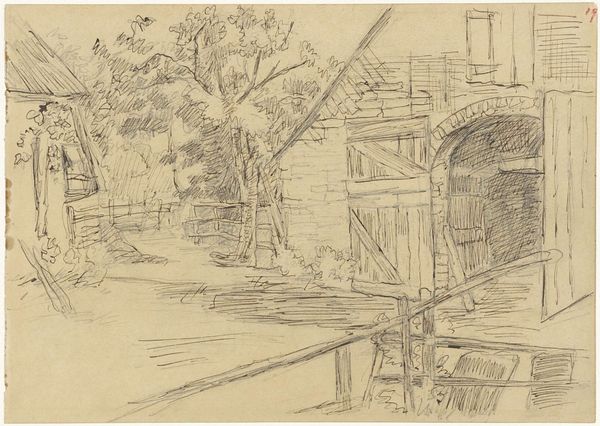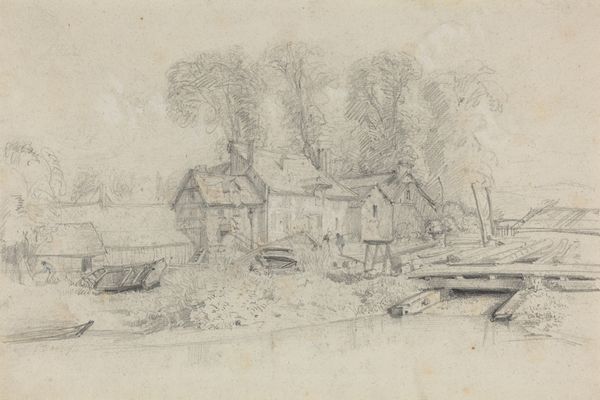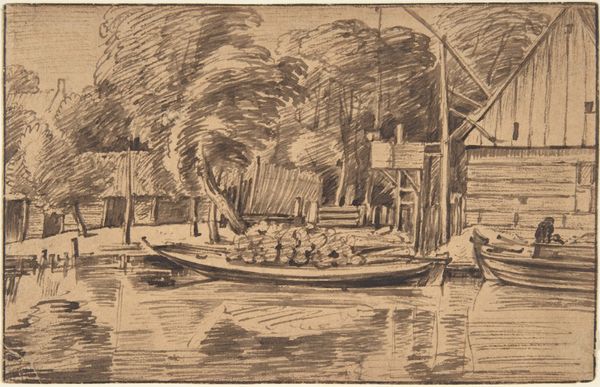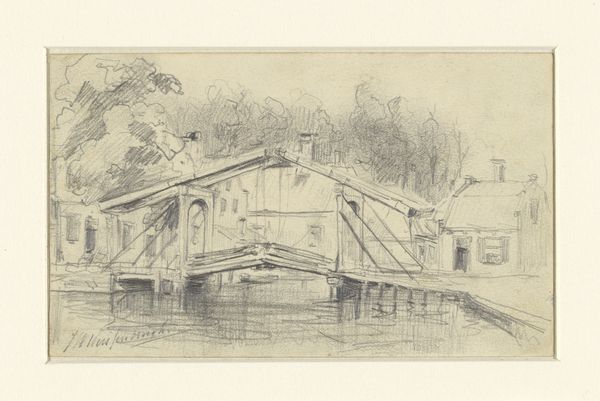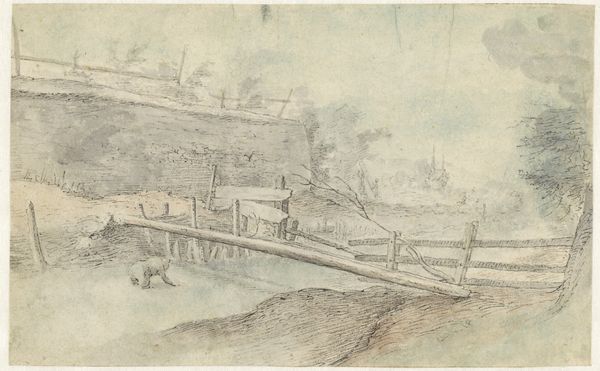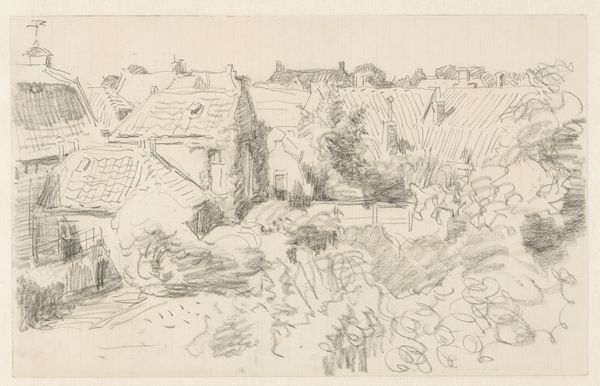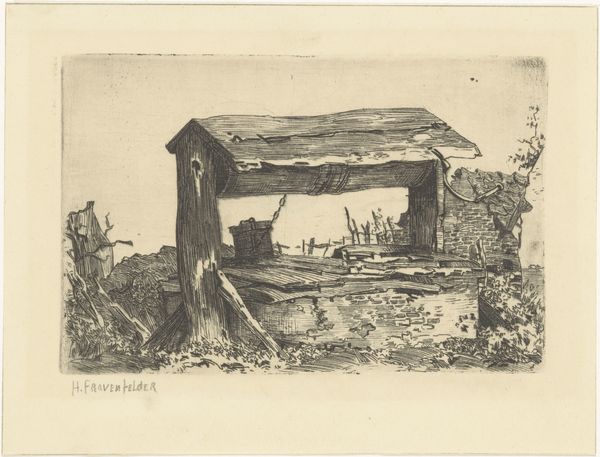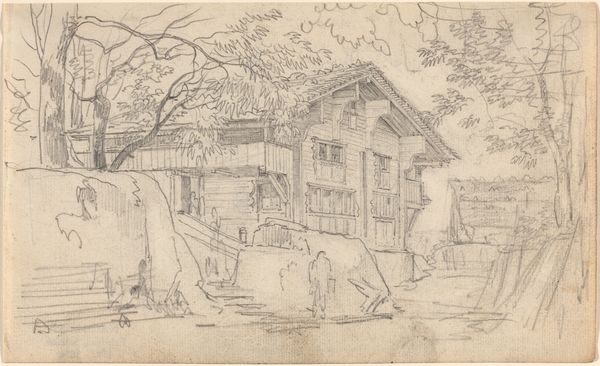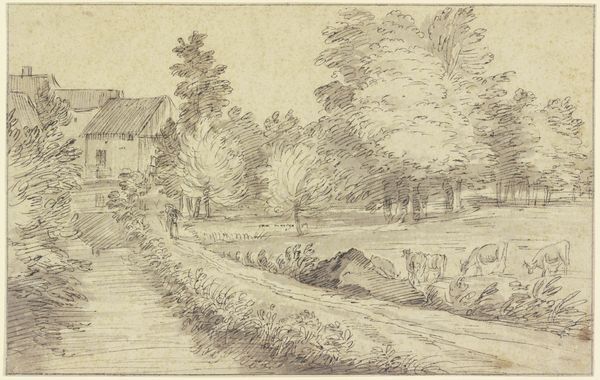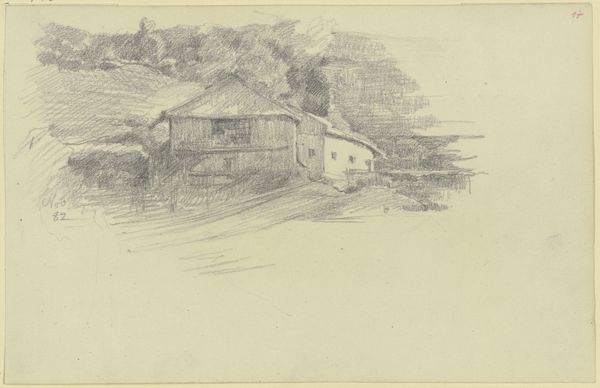
Dimensions: height 227 mm, width 303 mm
Copyright: Rijks Museum: Open Domain
Editor: So, this is "Scheepswerf," or "Shipyard," by Willem Bastiaan Tholen, dating from somewhere between 1870 and 1931. It’s an ink drawing on paper. There's almost a sense of stillness in the scene despite the implied industry of the shipyard, but I wonder what's really going on here? What do you see when you look at it? Curator: I see a critical lens through which we can view the changing socio-economic landscape of the Netherlands during that period. The detailed depiction of labor, and what appears to be working-class neighborhoods, encourages us to reflect on the lives impacted by industrial growth. Who is represented and, crucially, who *isn't*? Do we see the wealthy owners of the shipyards, or only the workers? Editor: That's interesting. I was focused on the technique, the sketch-like quality. But thinking about the social implications, do you think Tholen was trying to make a statement about the working class? Curator: Potentially. Art often reflects the concerns and realities of its time, and the late 19th and early 20th centuries were periods of immense social change. Even a seemingly straightforward landscape can be read as a commentary on labor conditions, class structures, and the human cost of industrial progress. Are there details within the sketch that confirm or contradict this hypothesis? Editor: I guess I hadn't considered the buildings in the background and their apparent proximity to the boats… There's also someone there sitting alone in a boat... Curator: Exactly. These details invite further questions: How might this connect with larger conversations around labor rights and the distribution of wealth in the Netherlands? It invites dialogue between art history and contemporary theory. Editor: I hadn’t really thought about it that way before. It’s amazing how much can be read into what looks like just a simple sketch. Curator: It highlights the power of art not just to depict but to instigate critical thought, bridging the historical and the contemporary. We've looked at Tholen's choices of style, and hopefully encouraged broader critical discussion around identity, race, gender and politics, with philosophical and cultural insights, and that feels powerful.
Comments
No comments
Be the first to comment and join the conversation on the ultimate creative platform.
